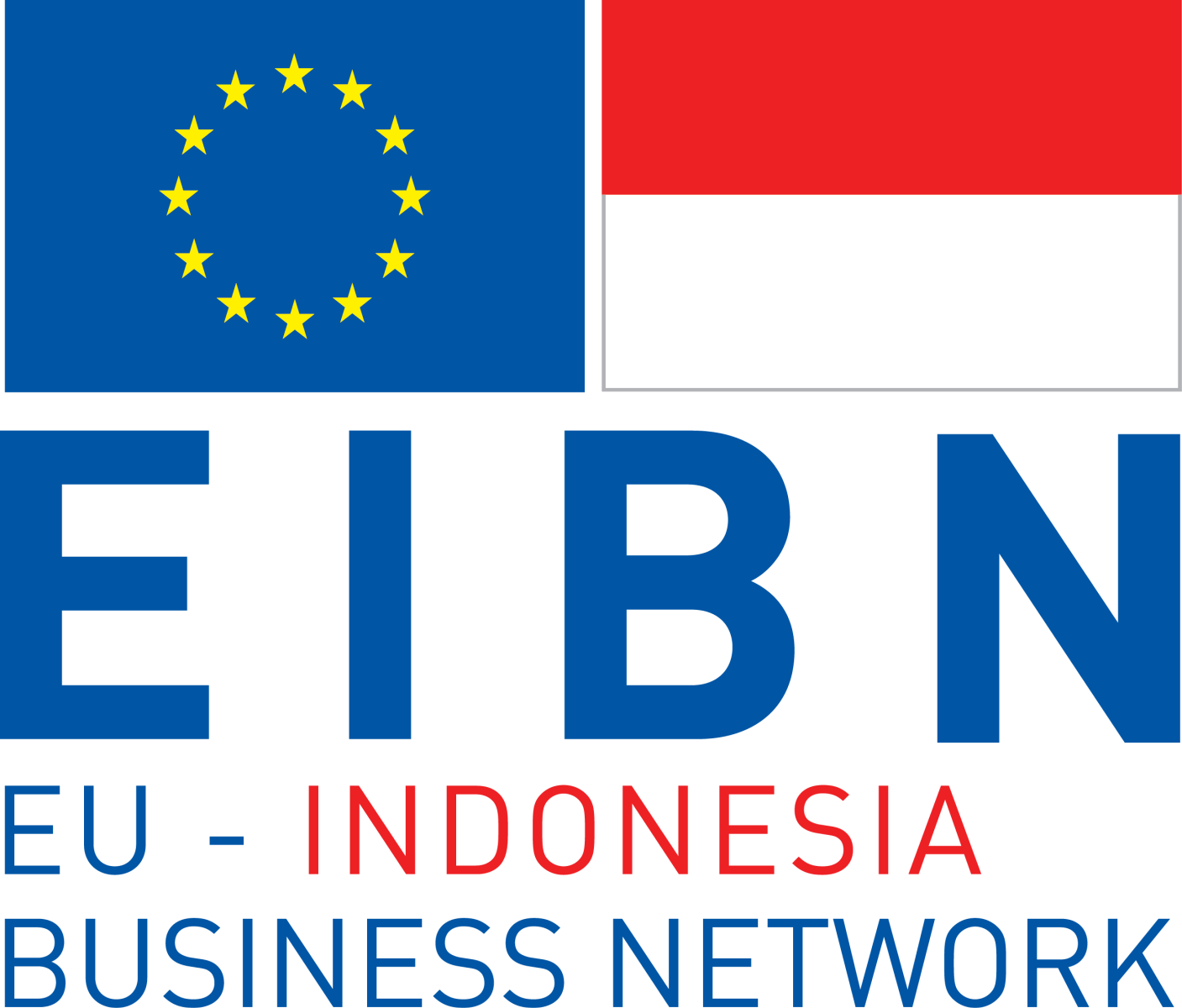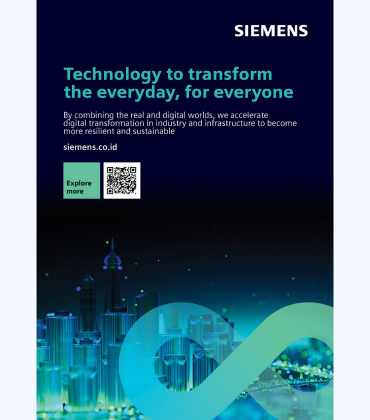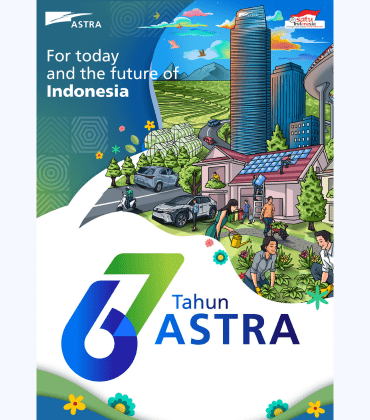The agribusiness industry is a complex yet highly significant pillar of the Indonesian economy. Its importance is reflected in the agriculture sector’s substantial contribution to national output. In 2024, agriculture accounted for 12.6 percent of Indonesia’s Gross Domestic Product (GDP), making it the third-largest contributor after trade (13.06 percent) and manufacturing (18.98 percent). These three major sectors are closely interconnected through agribusiness value chains, reinforcing the sector’s strong potential for investment.
Agribusiness is also one of the government’s key industrial development priorities and remains a strategic sector for both trade and investment. The Agriculture Ministry’s budget is set to rise to IDR 41.45 trillion in 2026, from IDR 40 trillion in 2025. In trade, the agriculture sector represented around 12.8 percent of Indonesia’s total trade at the end of 2023, a proportion that remained similar to its 12.4 percent share of exports and imports as of September 2024. In terms of investment, agriculture accounted for 27.66 percent of domestic investment into the primary sector and 28.69 percent of foreign investment as of the end of 2023.
Findings from the 2024 Agricultural Economic Survey (SEP) by BPS highlight updated production values and cost structures across key food crops—including rice, corn, soybeans, horticulture, and estate crops—reflecting shifts in input prices and improvements in efficiency. Despite ongoing production, Indonesia continues to rely on imports for several staple commodities due to rising domestic consumption driven by urbanization, higher health awareness, and evolving consumption patterns.
One of the longstanding challenges in Indonesia’s agriculture sector is irrigation, which remains in need of substantial improvement. Additional constraints include limited mechanization, low utilization of agricultural machinery, and reliance on chemically irrigated farmland. Broader infrastructure limitations also continue to affect productivity and competitiveness.
In the livestock subsector, dairy and beef cattle are predominantly raised by small-scale farmers, often as a form of savings or household investment. Most cattle are hand-fed with grass, agricultural by-products, and supplements. Feedlots—where cattle can graze freely—are limited and concentrated in specific regions. To meet domestic beef demand, Indonesia imports breeding cattle, feeder cattle, live cattle, and frozen meat. Poultry remains the most widely consumed meat in Indonesia and holds the largest share of the livestock market. Local production of Day Old Chicks (DOC) and animal feed is dominated by major domestic and foreign-affiliated companies.
The overall outlook for the agriculture sector remains positive. Rising demand—supported by Indonesia’s young and expanding population—continues to drive growth. Increasing urbanization and the expansion of tourism and leisure industries further support higher consumption of food and beverages.
Despite this positive trajectory, several challenges persist for businesses operating in Indonesia. Cold storage facilities remain underdeveloped, particularly outside Java. The regulatory environment is also dynamic, with laws and provisions relating to agricultural trade subject to frequent revisions. Regulations issued by the National Agency of Food and Drug Control (BPOM), including those related to Halal certification, are among those most prone to adjustment.
| HIGHLIGHTS |
Share of GDP Contribution according to Industrial Origin
Source: BPS
| Industrial origin | 2018 | 2019 | 2020 | 2021 | 2022 | 2023 | 2024 |
|
Agriculture, Forestry, Livestock, Fisheries |
12.81 |
12.71 |
13.70 |
13.28 |
12.40 |
12.53 |
12.61 |
|
A. Food Crops |
3.03 |
2.82 |
3.07 |
2.60 |
2.32 |
2.28 |
2.19 |
|
B. Horticulture |
1.47 |
1.51 |
1.62 |
1.55 |
1.44 |
1.37 |
1.39 |
|
C. Estate Crops |
3.30 |
3.27 |
3.63 |
3.94 |
3.76 |
3.88 |
4.17 |
|
D. Livestock |
1.57 |
1.62 |
1.69 |
1.58 |
1.52 |
1.56 |
1.58 |
|
E. Forestry |
0.66 |
0.66 |
0.70 |
0.66 |
0.60 |
0.22 |
0.59 |
|
F. Fishery |
2.60 |
2.65 |
2.79 |
2.77 |
2.58 |
2.66 |
2.51 |
|
Mining and Quarrying |
8.08 |
7.26 |
6.43 |
8.97 |
12.22 |
10.52 |
9.15 |
|
Manufacturing |
19.86 |
19.70 |
19.87 |
19.24 |
18.34 |
18.67 |
18.98 |
|
Trade, Wholesale & Retail |
13.02 |
13.01 |
12.91 |
12.96 |
12.85 |
12.94 |
13.07 |
|
Construction |
10.53 |
10.75 |
10.70 |
10.44 |
9.77 |
9.92 |
10.09 |
|
Transportation & Warehousing |
5.38 |
5.57 |
4.47 |
4.24 |
5.02 |
5.89 |
6.13 |
Agriculture Exports & Imports 2018 - 2022 (in USD)
Source: Satudata
|
Type / Year |
2020 |
2021 |
2022 |
2023 |
2024* |
|
Food Crops |
|||||
|
Export |
248,591 |
324,933 |
235,988 |
292,692 |
153,398 |
|
Import |
6,753,832 |
9,032,349 |
10,349,301 |
11,221,006 |
9,076,413 |
|
Horticulture |
|||||
|
Export |
649,458 |
709,181 |
734,222 |
804,112 |
723,581 |
|
Import |
2,312,332 |
2,711,954 |
2,800,706 |
2,862,964 |
2,169,041 |
|
Estate Crops |
|||||
|
Export |
28,236,212 |
40,706,710 |
42,032,040 |
33,788,600 |
23,572,983 |
|
Import |
4,821,560 |
5,999,569 |
7,173,791 |
6,594,106 |
5,480,469 |
|
Livestock |
|||||
|
Export |
1,240,813 |
1,306,468 |
1,436,709 |
1,379,152 |
992,727 |
|
Import |
3,669,981 |
4,713,214 |
5,495,850 |
4,677,158 |
3,309,016 |
|
Total |
|||||
|
Export |
30,375,075 |
43,047,292 |
44,438,960 |
36,264,556 |
25,442,689 |
|
Import |
17,557,704 |
22,457,085 |
25,819,648 |
25,355,234 |
20,034,939 |
*Data is as of November 2024
Agribusiness export and import values rose significantly from 2020 to 2021 particularly among estate crops which saw marked price increases during the year. The four biggest subsectors within Indonesian estate crops are palm oil rubber cocoa and coffee.
Production of Food Crops & Livestocks, 2020 - 2024 (in Tons)
Source: BPS
|
Type / Year |
2020 |
2021 |
2022 |
2023 |
2024 |
|
Rice |
5,464,920 |
5,441,529 |
5,474,898 |
5,398,099 |
5,314,272 |
|
Corn* |
3,984,642 |
4005,984 |
1,652,727 |
1,477,443 |
1,513,891 |
|
Soybean |
29,078 |
21,501 |
263,696 |
349,099 |
NA |
|
Meats (Beef and Buffalo) |
455,567 |
454,166 |
52476 |
47,746 |
49,625 |
|
Eggs |
587,438 |
589,343 |
655932 |
679,279 |
684,666 |
|
Dairy |
94,691 |
94,639 |
34936 |
78,737 |
80,835 |
*Production amount for corn includes fresh and processed corn
Imports of Food Crops & Livestocks, 2020 - 2024 (in Tons)
Source: Ministry of Agriculture
|
Year |
2020 |
2021 |
2022 |
2023 |
2024 |
|
Rice |
17,018 |
32,716 |
64,895 |
2,715,858 |
2,873,287 |
|
Corn* |
1,242,519 |
1,206,571 |
1,311,064 |
1,354,187 |
1,440,502 |
|
Soybean |
7,531,884 |
7,913,018 |
8,016,454 |
7,687,055 |
6,051,178 |
|
Meats |
190,254 |
241,663 |
259,501 |
263,768 |
118,730 |
|
Poultry Eggs |
2,017 |
1,988 |
2,036 |
2,079 |
1,344 |
|
Dairy |
316,343 |
345,025 |
375,240 |
329,950 |
258,172 |
*Production amount for corn includes fresh and processed corn
Top 5 Estate Crops by Trade Balance (in Thousand USD)
Source: BPS
|
Type / Year |
Ex/Im |
2018 |
2019 |
2020 |
2021 |
2022 |
2023 |
2024 |
|
Palm Oil |
Export |
16,530,212 |
14,716,275 |
17,363,921 |
26,755,136 |
27,738,517 |
22,685,184 |
20,046,565 |
|
Import |
914 |
45,530 |
939 |
694 |
1,401 |
1,274 |
1,510 |
|
|
Rubber |
Export |
416,853 |
379,939 |
335,345 |
425,656 |
383,015 |
277,404 |
3,269,906 |
|
Import |
773,772 |
700,189 |
596,083 |
995,452 |
987,267 |
815,470 |
940,069 |
|
|
Coconut |
Export |
1,268,425 |
890,810 |
1,171,840 |
1,650,422 |
1,715,645 |
1,314,430 |
1,642,025 |
|
Import |
18,966 |
27,978 |
47,635 |
112,512 |
108,013 |
58,537 |
132,930 |
|
|
Coffee |
Export |
279,961 |
359,052 |
379,454 |
387264 |
437555 |
279,937 |
316,721 |
|
Import |
66,186 |
38,280 |
18,280 |
32694 |
60789 |
116,966 |
186,773 |
|
|
Cacao |
Export |
1,245,794 |
1,198,734 |
1,244,184 |
1,206,775 |
1,259,655 |
1,197,695 |
2,646,153 |
|
Import |
706,092 |
775,985 |
650,706 |
804,299 |
822,900 |
979,638 |
1,457,779 |
Aside from palm oil, of which Indonesia is the world’s largest producer, the country is also listed among the world’s largest producers of rubber, coconut, coffee and cacao.
| CHALLENGES |
Although Indonesia shows strong prospects for agribusiness, several structural challenges continue to affect the ease of doing business.
As stated in Trade Ministry Regulation No. 72/2015 and reaffirmed in the BPS Annual Manufacturing Statistics 2024, the Indonesian National Standard (SNI) remains the national benchmark overseen by the National Standardization Agency (BSN), with enforcement continuing to strengthen. While not all goods are required to meet SNI standards, products subject to SNI must obtain a Registration Item Number (NPB) before they can be traded. The list of SNI-regulated products is updated regularly by BSN. Although NPB registration has been simplified compared to earlier regulations, penalties for non-compliant products have become stricter, including temporary market withdrawal.
Foreign companies must also consider that infrastructure for food transport and preservation remains uneven across Indonesia, particularly outside Java. Indonesia ranked 63 out of 139 countries in the 2023 World Bank Logistics Performance Index, which now emphasizes supply chain reliability. Despite moderate performance, Indonesia still lags behind regional peers such as Singapore, Malaysia, Thailand, and Vietnam. Cold chain logistics remain a significant bottleneck, with many regions still lacking reliable electricity and modern refrigeration infrastructure. These gaps affect the handling of chilled and frozen products and complicate long-distance distribution across the archipelago.
Indonesia’s geographical scale further adds logistical complexity. Investment in transport infrastructure—including roads, ports, railways, shipping routes, and inter-island connectivity—remains a national priority. The government continues to advance maritime connectivity programmes to reduce logistics costs between western and eastern Indonesia, alongside the development of major highway corridors such as the Trans-Sumatra and Trans-Sulawesi networks.
Lastly, corruption and bureaucratic hurdles continue to pose risks for businesses operating in Indonesia. These issues affect agribusiness as well as other sectors. Companies must remain aware of procedural requirements, regulatory changes, and administrative processes when entering or expanding operations in the market.
| CONCLUSION |
Agribusiness remains a major contributor to Indonesia’s economy, supported by strong demand from the food and beverage industry and robust domestic consumption. In 2024, the agriculture, forestry, and fisheries sector accounted for over 12 percent of national GDP, keeping it among the top three contributors after manufacturing and trade. These sectors also continue to serve as key employers, with nearly 30 percent of Indonesia’s total workforce engaged in related activities. The government’s long-term policy direction emphasises food security and progress toward greater self-sufficiency in strategic commodities.
With a population of around 280 million as of 2024, a growing middle class, rising tourism, and steady economic expansion, Indonesia remains a substantial market for agribusiness. In the horticulture and food crops subsectors, many everyday consumer products are already produced domestically by a mix of local and multinational firms. The commercial seed market is led by major players such as East West Seed, BISI, Syngenta, and DuPont, while the fertilizer market is dominated by the state-owned Pupuk Indonesia group and its subsidiaries. Technology adoption and research and development remain critical to enhancing productivity and efficiency across the sector.
The dairy segment illustrates both opportunities and structural gaps. Domestic fresh milk production meets only around 20–25 percent of national demand, with the remainder supplied through imports, primarily in the form of milk powder and processed dairy products. Packaged dairy items continue to gain traction, supported by rising incomes and greater health awareness. To reduce deficits in beef and dairy supply, Indonesia imports breeding cattle and beef, with import policies adjusted periodically to stabilize prices and manage fluctuating domestic stocks.
Agricultural technology (agritech) is evolving rapidly as startups tackle production, supply chain, and market-access challenges. Agritech startups in Indonesia secured approximately USD 66 million in funding in 2024, reflecting continued investor interest in digital solutions for agriculture. These innovations include precision farming tools, remote monitoring, and digital platforms connecting farmers with buyers.
Overall, Indonesia’s agribusiness sector offers substantial long-term potential. Existing challenges in productivity, infrastructure, standards compliance, and input dependency present opportunities for new business models, technological solutions, and partnerships that can strengthen value chains and support more sustainable growth across the sector.
This content is done in collaboration with:
Business Sectors



